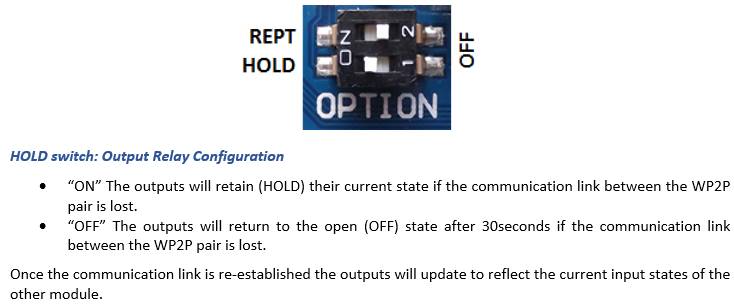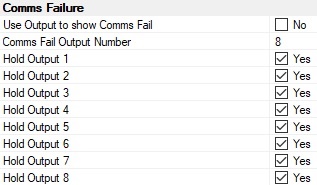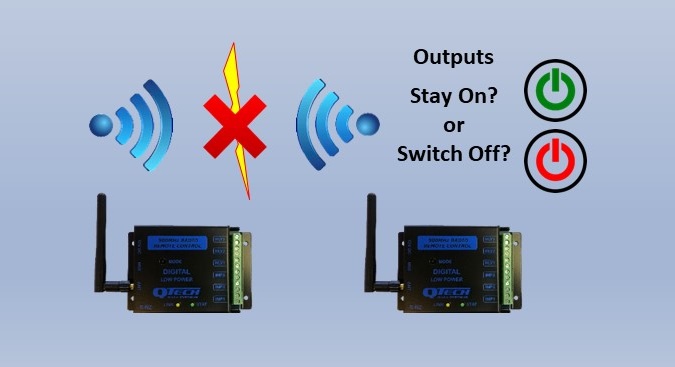When designing your remote monitoring system, it is important to consider what happens to the output signals if the radio link goes down or is interrupted, ie “failsafe”.
Failsafe in this context means causing a piece of equipment to revert to a safe condition in the event of a malfunction or breakdown. A good example is effluent pump control – Do you want the connected pump to continue pumping or is it better to switch the pump off for the duration of the comms fail?
Our WP2P, MPC and Q48-P2P systems all give you failsafe options if the radio comms link is interrupted, ensuring that the consequences are minimised.
WP2P Digital I/O System
The popular WP2P low power radio system features the “output hold” option.
This is activated using a small selector switch (DIP switch) inside the enclosure of the Rev E WP2P module.

MPC Multi Point Controller System
The powerful MPC controller uses the “QTech Workbench” software to configure options for both “output hold” and “comms failure” detection.

This document covers other useful information for system designers.
Each of the WP2P slave modules in a MPC system will need the DIP switch set to activate their failsafe options.
Q48-P2P Point to Point System
The Q48-P2P system controls the state of the outputs if the radio link is interrupted, ie comms failure. Normally, if a comms fail happens the modules retain their last known state (eg if an output is on, it will remain on during a comms fail). However, this does not suit some applications.
A factory configuration option is available for Q48 P2P systems. It is called “failsafe” which must be requested when you order a Q48-P2P system.
Using the failsafe feature, the digital outputs will all switch off for the duration of the comms fail. Similarly, the analogue output signals will go to 0mA.
Please refer to the user manual for further details
on both failsafe and how long a comms failure will take to establish.
Note – The Q48-P2P failsafe feature is subtly different to the WP2P and MPC systems. Please be mindful of this if you are already familiar with our WP2P systems.
For more information or to discuss your application, please contact us.

